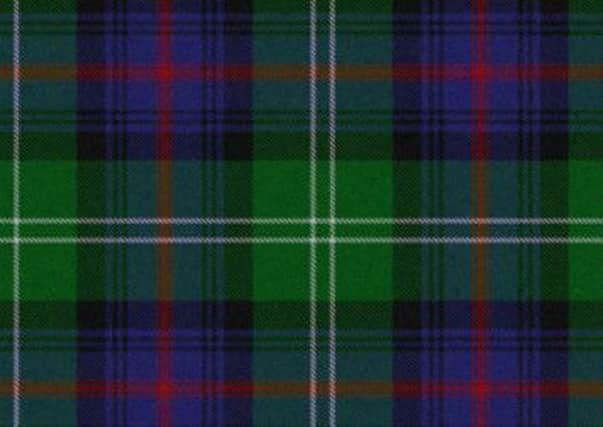Scottish clan profile: Sutherland


Motto: Sans Peur (Without Fear)
Sub septs: Cheney, Cheyne, Chiene, Clyne, Duffes, Duffus, Federith, Gray, Grey, Keith, Mouat, Mowat(t), Moray,
Murray, Norman, O’May
Current chief: The Rt. Hon. The Countess of Sutherland
Current seat: Dunrobin Castle
Castles: Dunrobin Castle, Dornoch Castle, Duffus Castle, Forse Castle, Aberscross Castle
Advertisement
Hide AdNotable members: Elizabeth Sutherland, 24th Countess of Sutherland (current chief); George Leveson-Gower, Marquess of Stafford (1st Duke of Sutherland), 3rd Earl of Sutherland (fought at Battle of Bannockburn)
Origins
The origins of the Sutherland clan date back to the 12th century. Freskin, a Flemish nobleman acting under King David I of Scotland, was assigned land in West Lothian, but his power base would ultimately lie in Moray, where he was also granted lands. He then consolidated his power by marrying himself and his sons into the ancient Pictish house of Moray. Freskin’s grandson, Hugh de Moravia (or Moray in the Norman language), was granted lands in Sutherland. Freskin’s younger brother William was the progenitor of Clan Murray. Sutherland, meaning “south of the land” of Orkney and Caithness, was the territorial name used by chiefs who bore the surname de Moravia. Hugh de Moravia’s eldest son, William, was William de Moravia, 1st Earl of Sutherland. It was thus that the Sutherland name established itself.
Rising fortunes and clan feuds
The Sutherlands were frequently at the heart of notable historic conflicts, such as the Scottish wars of independence. William de Moravia, 3rd Earl of Sutherland fought at the Battle of Bannockburn in 1314; Kenneth de Moravia, 4th Earl of Sutherland died at the 1333 Battle of Halidon Hill.
William de Moravia, 5th Earl of Sutherland, whose wife was Margaret, the daughter of Robert the Bruce and sister of David II of Scotland, led the clan at Kilblene where he participated in the siege of Cupar Castle Fife.
In 1431, the Sutherlands, fighting alongside Angus Murray, were defeated at the Battle of Drumnacoub by an army led by Angus Du Mackay, chief of the Mackay clan. The Battle of Flodden in 1513 saw another Sutherland fall to his death: William Sutherland, 4th Laird of Duffus.
The Battle of Torran Dubh saw the Sutherlands attacked by the Mackays. At this point, the Gordons had married into the Sutherlands through the joining of Elizabeth de Moravia, 10th Countess of Sutherland and Adam Gordon, younger son of Gordon of Huntly. The Mackays were defeated, but the subsequent year the family was in something like civil war: Alexander Sutherland, who had led the defence against the Mackays, rose up against his sister Elizabeth and her husband Adam, but fell to defeat at the Battle of Alltachuilain. Fissures between the clans Gordon and Sutherland emerged as the ripple effects of the Reformation reached the Highlands. Clan Sutherland became vocal Protestants, and sought to distance themselves from Gordons, who were Catholics.
Advertisement
Hide AdOther rivalries were much more fierce. The Sinclairs of Caithness, and the Mackays and McLeods to the west were habitual enemies. The Mackays were perhaps the most hated of them all, given that the feud, stemming from the death of William, 5th Earl of Sunderland at the hands of the Mackays, lasted four centuries.
Jacobite uprisings
The Sutherlands played a not insignificant role in the Jacobite uprisings of the 18th century. During the 1715 uprising, John Gordon, 16th Earl of Sutherland called out his men to battle on behalf of George I of Great Britain. Clan Sutherland protected Inverness Castle against the Jacobites. At the Battle of Glenshiel, the Sutherlands helped defeat the Jacobites in 1719. By this time, the Sutherlands had been operating under the name Gordon for some time, ever since Adam Gordon had married into the Sutherlands. However, John Gordon, 16th Earl of Sutherland, resumed the surname in 1719. Staunch supporters of the British government, the Sutherlands fought for them again in 1745 during another Jacobite uprising. George Mackenzie, 3rd Earl of Cromartie, led the Jacobites and seized Dunrobin Castle, the Sutherland seat. William, 17th Earl of Sutherland managed to escape, and by this time had reconciled with the Mackays, thus ending a bitter 400-year feud. William then joined the Duke of Cumberland’s army in Aberdeen to engage in what became known as the Battle of Littleferry, at which the Earl of Cromartie was eventually defeated.
Highland clearances, chief dispute
Advertisement
Hide AdGeorge Leveson-Gower, Marquess of Stafford, who became the Duke of Sutherland when marrying Elizabeth Sutherland (daughter of William, 18th Earl of Sutherland) was a strident figure who ruthlessly set about engineering clearances in the Highlands in 1833, breaking with tradition by reneging on his customary clan obligations. He was solely responsible for eradicating the old way of life in Sutherland and has been something of a hate figure ever since, as were many other landowners who followed suit across the Highlands. His wife, Elizabeth, had been the subject of a fierce dispute over a chiefdom which she ostensibly inherited through her deceased father, William Sutherland, 18th Earl of Sutherland, who died in 1766. George Sutherland of Forse, who was a direct male descendant of the original de Moravia/Sutherland Earls of Sutherland and Sir Robert Gordon of Gordonstoun, a descendant of the Gordon Earls of Sutherland, challenged her claim. A hearing at the House of Lords in 1771 settled in her favour.